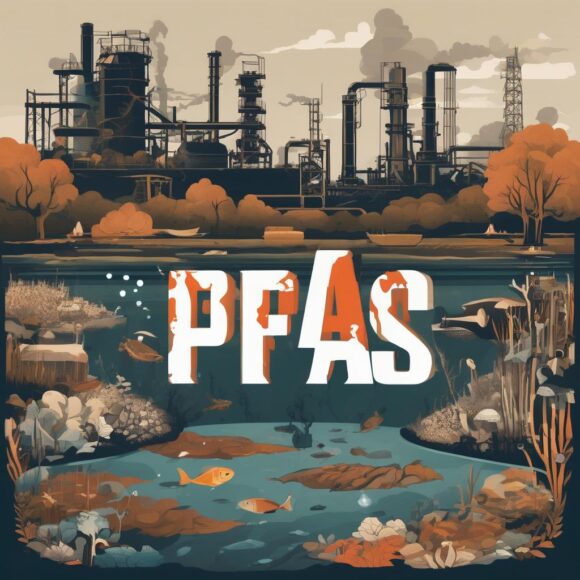As litigation and regulation increase around per- and polyfluoroalkyl substances (PFAS), insurance underwriting is tightening across lines. Insurance professionals who specialize in PFAS say insurers are mandating coverage exclusions and, in some cases, declining to write liability policies at all in PFAS-exposed industries.
Robin Kelliher, environmental solutions group counsel at USI, described the current insurance landscape as being hit by a “superstorm” of factors related to PFAS.
“The insurance underwriters are just seeing lawsuits, lawsuits, lawsuits,” she said, and they don’t know how those lawsuits are going to play out.
Industrial manufacturing company 3M reached a $10-plus billion settlement in June 2023 with a collection of U.S. public water systems to resolve PFAS water pollution claims. Around the same time, Dupont reached an estimated $1.19 billion settlement with a collection of U.S. public drinking water systems.
A new EPA rule and recent Insurance Services Office changes are also shaping how underwriters view the risk. Just a few months ago, the EPA set a limit on how much PFAS can be in drinking water. And, last year, ISO published endorsements broadly excluding PFAS-related claims for insurers to use in CGL policies.
Read the full version of this article on the Carrier Management website.
“It touches everything,” Kelliher said of PFAS. “And the carriers are seeing the lawsuits. Their insureds are being sued, and they’re submitting them as claims. That’s why the carriers are reacting the way they are. Because it’s coming from all different avenues.”
PFAS Background
The EPA reports that PFAS are widely used, long-lasting chemicals, the components of which break down very slowly over time. Studies have shown that exposure to the chemicals may be linked to harmful effects in humans and animals.
PFAS can be found in drinking water, fire extinguishing foam, food, personal care products and more. Per the EPA, it can be found in the air and soil. On its website, the EPA said current peer-reviewed studies link certain levels of exposure to reproductive and developmental effects, as well as an increased risk of some cancers and reduced immune system ability.
“Current scientific research suggests that exposure to certain PFAS may lead to adverse health outcomes,” the EPA reports. “However, research is still ongoing to determine how different levels of exposure to different PFAS can lead to a variety of health effects. Research is also underway to better understand the health effects associated with low levels of exposure to PFAS over long periods of time, especially in children.”
Lisa Williams, global head of casualty at Zurich Insurance Group, explained that PFAS exposure predominantly tends to fall in two major categories: premises exposure and products liability exposure.
Premises exposure occurs where PFAS is present on site, either through the products and raw materials associated with the occupation or from sources like fire-fighting foams. The escape of these PFAS into the nearby environment can cause pollution damage.
Products liability exposure occurs when a product contains PFAS, and people are exposed to it, potentially suffering injury because of PFAS in that product.
Increasing Underwriting Exclusions
A recent USI report shares that litigation is prompting the reassessment of approaches to PFAS underwriting, coverage, risk management and claim handling. The report says that most insurers are mandating exclusions on general liability and products liability policies on all renewal accounts, regardless of industry or exposure to loss, but especially manufacturing, hospitality, retail and owners of real estate.
USI anticipates that finding PFAS coverage in the environmental insurance marketplace will be more difficult for product exposure, including supply chain and distribution risks and site-specific risks.
Kelliher said that PFAS surfaced on pollution liability underwriters’ radar around 2018—and as state regulations on the coasts began to surface, carriers began to pay attention. Underwriters used to be more willing to write the exposure, she said, but that has changed in the past year because of the liability that stems from the Comprehensive Environmental Response, Compensation, and Liability Act.
“When the EPA started talking about adding PFAS as a hazardous substance under CERCLA, then, all of a sudden, the underwriting scrutiny became tenfold more,” Kelliher said. “And we started seeing PFAS exclusions being added to our pollution policies.” Increased litigation is also creating what she described as a “reactive” market.
Kelliher has seen exclusions extend beyond the pollution liability line and into contracting operations, product liability and more. She sees a connection between this and ISO’s approval of PFAS-specific exclusions for commercial general liability and umbrella policies.
“So, this year, all of our clients are starting to see, on their standard lines of business like their GL policies, a PFAS exclusion,” she said. That “is really causing a lot more havoc in the marketplace.”
Kelliher said she doesn’t know if carriers are adding PFAS exclusions carte blanche to standard policies, “but if you’re a manufacturer, you’re seeing a PFAS exclusion. And it’s for your products, so that becomes really problematic for our insureds.”
In email correspondence, Mike Jackman, head of governance, sustainability and standards for QBE’s North America Chief Underwriting Office, explained that to the extent that there are classes of business within appetite that may have PFAS exposure, “we’re likely to see exclusions.” The higher the risk of exposure, the more likely it is that the carrier will mandate the exclusion, he said.
“Across QBE, we ask underwriters to ensure that they remain up to date with the evolution of PFAS litigation and regulation in their regions, familiarizing themselves with industries, sectors, and products where PFAS could be an issue,” he added.
Jackman expects that industry exclusions will be most common with insureds seeking general liability, products liability or pollution liability coverage. Insureds operating in chemical manufacturing, food packaging, cosmetics and waste management are among those more likely to see exclusions.
Brownyard Group, a program administrator that provides specialized liability insurance to the domestic cosmetics industry, including manufacturers and distributors, has seen carriers become more strident with exclusions.
Teri Pereira, account manager of the Brownyard Group’s foundation program, said that “from what we have experienced with our own carriers and with others, most carriers are adding the PFAS exclusion form to policies.”
When it comes to Brownyard’s pest program, “our carrier is adding an Insurance Services Office exclusion to our policies with no buyback option available at this time,” explained John Culotta, the program’s manager.
Was this article valuable?
Here are more articles you may enjoy.


 Auto Lobbying Groups Unite to Pressure Trump for Tariff Relief
Auto Lobbying Groups Unite to Pressure Trump for Tariff Relief  La Niña’s End Threatens to Unleash an Active Atlantic Hurricane Season
La Niña’s End Threatens to Unleash an Active Atlantic Hurricane Season  In Fight Over Insurance, Neighbors Crowdsource LA Fire Contamination Data
In Fight Over Insurance, Neighbors Crowdsource LA Fire Contamination Data  Forecast Calls for Wildfires to Burn More Land Across U.S. This Year
Forecast Calls for Wildfires to Burn More Land Across U.S. This Year 